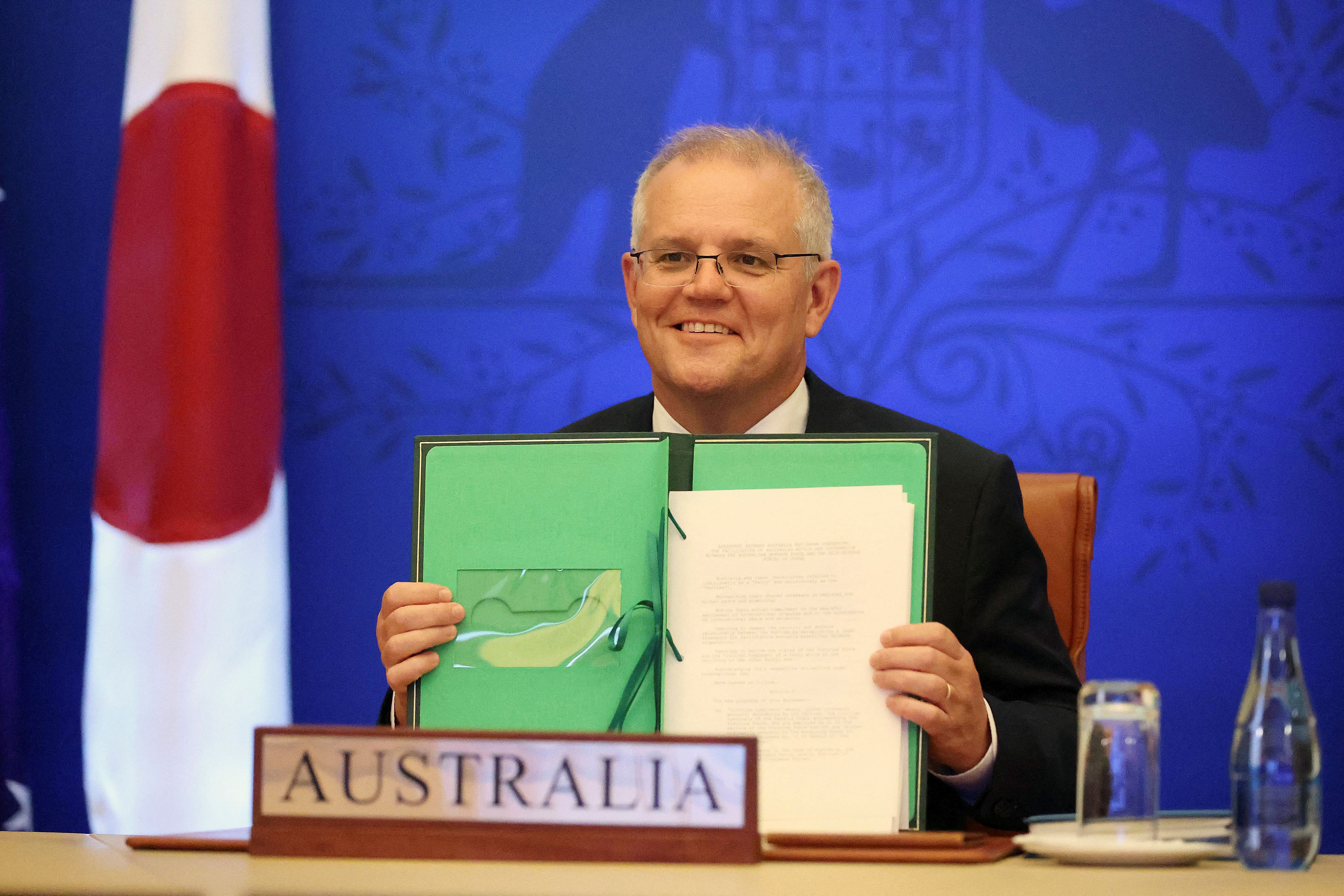
Australia and Japan’s new defense pact sends a strong message to China — that the two countries will work closely to ensure a stable Indo-Pacific region, a senior analyst from an Australian think-tank said Friday.
Japanese Prime Minister Fumio Kishida met his Australian counterpart Scott Morrison virtually on Thursday. The two countries signed a reciprocal access agreement (RAA) that will go through necessary domestic procedures before going into effect “as early as possible.”
The agreement will pave the way for much closer defense relations between the two countries, as Japanese and Australian forces can deploy from each other’s bases and establish common protocols, according to Malcolm Davis from the Australian Strategic Policy Institute.
“What is even more important is the strategic message this RAA sends to the region — that Japan and Australia are working together much more closely to ensure a free and open Indo-Pacific,” Davis said on CNBC’s “Squawk Box Asia.”
“That is occurring against a context of a rising China that is much more assertive, and even aggressive, in areas such as the South China Sea, East China Sea, where Japan and China have a territorial dispute, and of course, in relation to Taiwan,” he added.
Australian Prime Minister Scott Morrison shows a document during a virtual summit with Japanese Prime Minister Kishida Fumio in Canberra on January 6, 2022.
AFP | Getty Images
“I fully expect some terse statements out of the Chinese ministry of foreign affairs in Beijing,” Davis said, referring to China’s likely response to the Australia-Japan defense agreement, which has been in the works for years.
“They won’t like this, but frankly, we make our defense policy choices based on Australia’s needs, not on what China is happy with,” he added.
What is the Indo-Pacific region?
Those arrangements send “a strong message to Beijing that the U.S., the U.K., Japan, other key powers are working together to do a number of things,” Davis said. First, they demonstrate the countries’ commitment to build a stable, free and open Indo-Pacific; second, they act as a way to deter China in areas of disputes, including Taiwan.
“Thirdly, to be able to respond to threats when they do emerge,” he added.
Taiwan is at the forefront of discussions as the United States, Japan and Australia strengthen their relationships with one another, Curtis Chin, Asia fellow at the Milken Institute, told CNBC’s “Street Signs Asia” on Friday.
“If China were to speak freely, clearly I think they would be worried,” he added.
China’s rising influence
ASPI’s Davis told CNBC that a big concern is the potential for China to make some kind of move against Taiwan — and existing security pacts and arrangements in the Indo-Pacific could “strengthen the credibility of deterrence.”
Some political analysts say rising tensions between the U.S. and China over Taiwan will be the top risk for Asia this year.
On the economic front, China is a member of the world’s largest trade agreement, the Regional Comprehensive Economic Partnership, which includes a number of countries in the Indo-Pacific region. Beijing is also lobbying to join another mega trade deal in that part of the world.
The U.S. is involved in neither of those trade pacts.
China also has an ambitious program called the Belt and Road Initiative, which aims to build physical and digital infrastructure that connects hundreds of countries from Asia to the Middle East, Africa and Europe and extend the country’s influence in those regions.
Chin from Milken Institute explained that while much of the discussions are around how other nations are reacting to a rising China, it is important to also look at what the country is facing domestically.
That includes its efforts to contain the Covid outbreak as well as trying to get its economy back on track — economists are worried that the problems in the property market and sluggish consumption could weigh on China’s growth outlook.
Still, Chin said he hopes that in 2022, all parties involved will “take a step back and recognize it’s [to] no one’s benefit if what some call an emerging cold war becomes a hot war in the Asia-Pacific region.”
Source: CNBC
